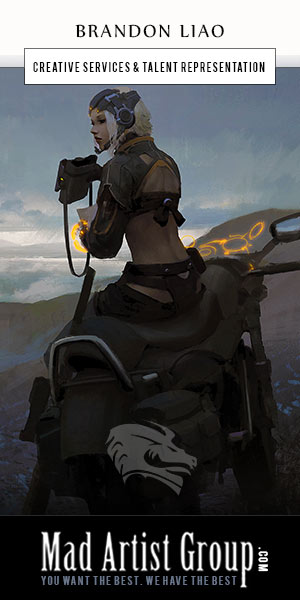In the tech industry, Artificial Intelligence (AI) has become very popular in recent times. From autonomous vehicles to personal assistants, AI is influencing nearly all industries. However, graphic design is an exciting field where AI is making great impressions. Graphic design is a method of communicating visually. Images, symbols, and text are created and combined to convey a message. Graphic designers utilize their imagination, creativity, and knowledge of design to generate visual illustrations of concepts and ideas. Graphic design is gaining more efficiency and accessibility with AI. This blog will discuss how AI alters graphic designers’ performance and impacts the graphic design industry.
A Brief Introduction to the Role of AI in Graphic Design
AI can generate or improve design elements like layouts, typography, imagery and color palettes for businesses. AI-powered design tools can also aid data analysis, image recognition and pattern recognition, allowing designers to make more informed decisions and produce outstanding designs.
AI is still in its infancy in graphic design, and designers will continue to play a crucial role. By automating repetitive tasks and offering insights, AI may simplify the process of designing graphics and improve the overall quality of the end result.
Ways by Which AI is Utilized in Graphic Design
AI can automate repetitive duties, suggest design alternatives, and provide data-driven insights that can enhance design quality. Here are some applications of AI in graphic design:
- Composition & layout: AI algorithms can evaluate user data and generate a personalized website and application layouts. In addition, they can recommend various layout suggestions to designers depending on the content they are working with.
- Typography & color: AI can recommend color palettes and font combinations according to customer preferences and former design decisions.
- Image editing: Based on user input, AI-powered editing tools may autonomously eliminate backgrounds, alter the color balance, and apply filters.
- Design automation: Artificial intelligence can automate repetitive design tasks like resizing pictures or creating numerous versions of a design.
- Data analysis: Artificial intelligence can analyze user data to assist designers in optimizing the user experience when using an application or website.
- Generative art: Artificial intelligence algorithms can be designed to generate distinctive designs that change over time, resulting in generative art.
An Overview of the Impact of AI in Graphic Designing
The different types of impact AI has on graphic designing include:
Repetitive task automation
The capacity to automate repetitive activities is one of the greatest benefits of AI in graphic design. This includes resizing images, choosing fonts and color palettes, conceptualizing designs and developing layout templates. Crello use, Canva, and Designhill use artificial intelligence algorithms to propose design layouts and color combinations and even provide designers with stock images. This saves designers a great deal of time, permitting them to concentrate on more complex and creative duties.
Increasing creativity
AI can also enhance the creativity of designers. Tools powered by artificial intelligence can analyze a designer’s preference, design style, and previous work to generate suggestions for components of design. This facilitates the exploration of novel design concepts and ideas that designers may not have previously considered. Tools like Sketch2Code and Adobe’s Sensei use artificial intelligence to generate code from design drawings, enabling designers to rapidly create interactive prototypes without coding expertise. This allows designers to concentrate on the artistic side of design rather than the technical details.
Enhanced user experience
AI also facilitates designers’ creation of user-centric designs to enhance the user experience. By analyzing user behavior, preferences, and patterns, AI algorithms can provide insights on how to optimize product design. Using AI, for instance, a design team can analyze user data to determine which features are useful. Based on this information, the team working on design can then make informed judgements about how to enhance the user experience.
Design personalization
Personalization is gaining popularity in the field of design. Using AI, designers can create designs that satisfy users’ specific requirements and preferences. For instance, AI algorithms can assess user data to recommend relevant services, products, or content. Designers can then use this information to create personalized product recommendations or advertising initiatives.
Guaranteeing consistency
Design requires consistency, and AI can assist designers in ensuring that their creations are consistent through various devices and platforms. AI algorithms are capable of analyzing design elements like typography, layout and color to detect flaws and recommend modifications.
Adobe’s XD and Sketch utilize AI to develop designs that ensure uniformity along various devices and platforms. This allows designers to preserve the quality of their creations while delivering a consistent user experience.
Reducing expenses
AI-powered tools for design can contribute to cost savings. Traditional graphic design procedures can be expensive and time-consuming. With AI, however, designers can automate numerous duties, reducing the resources and time needed to develop a design.
This saves money for design agencies and companies to provide graphic design with better accessibility for small businesses and individuals who might not have the finances to employ a professional graphic designer.
Minimizing human error
AI may decrease mistakes made by humans in graphic design. Humans are prone to commit errors, particularly when performing complex and repetitive duties. AI-powered tools for design can assist in identifying errors and recommending corrections prior to the design being finalized.
The takeaway
Embracing the power of AI and partnering with a reputable AI company can unleash limitless opportunities for designers and pave the way for the creation of innovative and aesthetically stunning works. Don’t give up the chance to leverage the power of AI and elevate your graphic design endeavors to new heights. Opporture , a leading AI-based training model company in North America, has shared the above-mentioned valuable insights on how AI reshapes graphic design.










